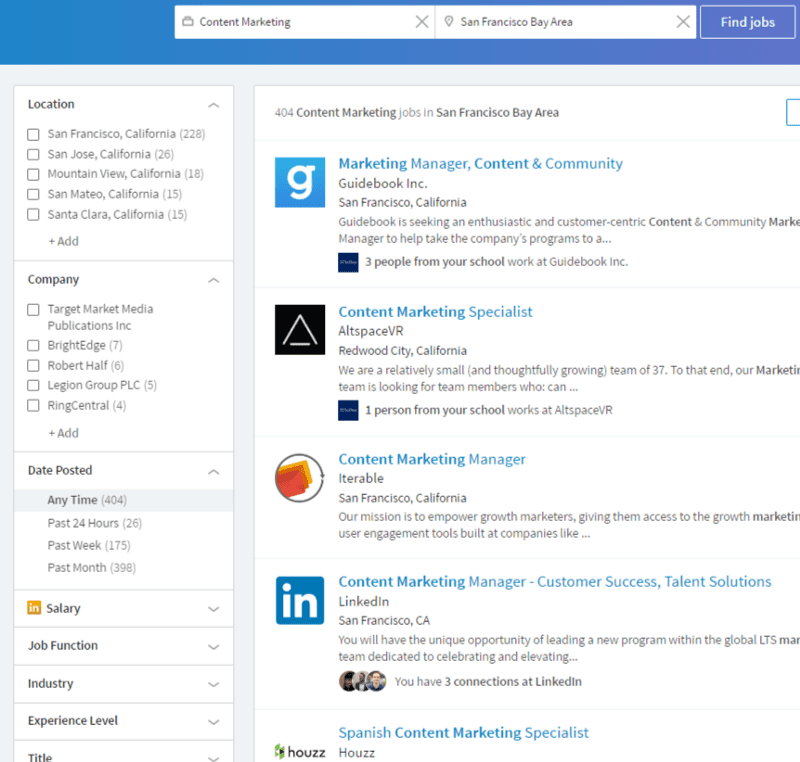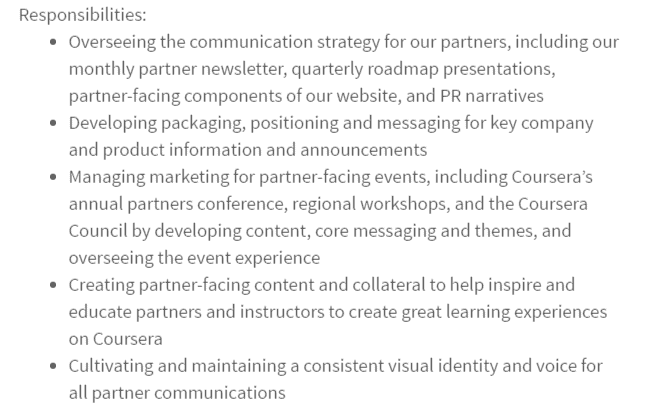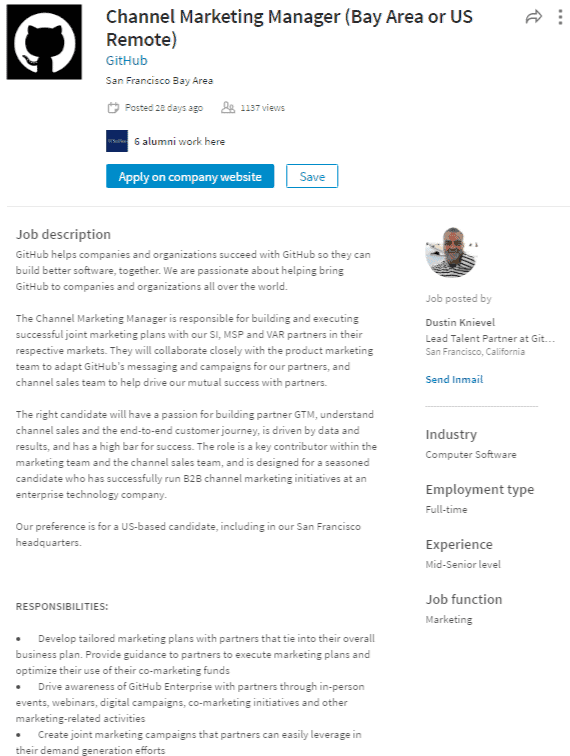
How to Decipher Job Descriptions
It may not be obvious, but a lot of people go about applying to jobs in the wrong order. They decide what they are (i.e. a programmer, a writer, a lab tech) and then start building their resume without even looking at what jobs they will be applying for. Then they try to fit the job description to their pre-made resume.
The most effective way to start building your resume is to first search for jobs. When I was looking for content marketing jobs I had a very vague idea of what that position was anymore. That’s because job requirements are always changing and, if you’ve been out of the job market for a while, chances are you have an outdated understanding of what’s now required. So the first thing is to look up your given subject and see what’s out there and what’s in demand.
Here’s what my search looked like:


Here’s how to decipher what you see:
- Job Description: This is mostly a useless section. Most companies use this section of a job posting to hype themselves, hype the position, and write generic things about “culture fit.” I don’t even read this section anymore.
- Responsibilities: This is the most important section to look at. This is really what you’ll be doing on the job. You want to be able to do at least 70% of the things listed on here. If there are some things you can’t do or haven’t done, that’s okay, that’s called “room for growth.” We’ll also be using this section to create an amazing set of resumes and cover letters later on.
- Requirements: This section is just a filter and should be used as one. Employers like to exaggerate these qualifications because they think it will get them better candidates. I use these requirements very loosely. If it says “minimum 8 years experience…” and I only have 3 years experience then it’s probably not a good fit and they want someone more senior level. If it says “minimum 4 years experience…” and I only have 3 years, then I’ll apply anyway. Use this as a very rough filter of what they want.

TAKEAWAY:
Anytime you modify your resume make a copy of it. You'll quickly amass a library of resumes that you can pull from for future jobs.
For example, I currently have a library of 22 resumes, all of which have very small differences between them. When I see a new job I want to apply for, I rarely have to make a new resume anymore. I just look in my library and find the appropriate one for that role.
Similar to paying monthly payments on a mortgage, with every resume you create you're actually building equity as a candidate. Your library of resumes will save you hundreds of hours down the line, so start building it today.